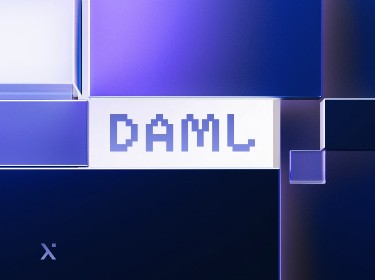The Ethereum Merge has at last happened, marking the start of a new era for the platform’s development. But what is the Merge all about, and what are Ethereum’s next steps?
The entire crypto community had been waiting for this event, even though some members were quite skeptical. The Ethereum Merge was finally executed on September 15, 2022. It completed Ethereum’s transition from the Proof-of-Work (PoW) to the Proof-of-Stake (PoS) consensus mechanism. This resulted in a reduction in the platform’s energy consumption by around 99,95%.
Vitalik Buterin, the co-founder of Ethereum, celebrated the Merge on his Twitter account, saying:
“And we finalized! Happy merge, all. This is a big moment for the Ethereum ecosystem. Everyone who helped make the merge happen should feel very proud today.”
Nonetheless, the long-awaited Merge raises numerous questions for crypto investors and business owners alike. Read on to find out all the relevant information about the Ethereum Merge and its importance for the global crypto community.
![]()
What is the Ethereum Merge?
Previously known as Ethereum 2.0, the Ethereum Merge refers to the upgraded version of the Ethereum blockchain, which now relies on the Proof-of-Stake consensus algorithm to verify transactions via staking instead of mining.
The Ethereum Merge represents the official switch to the new PoS consensus layer — the Beacon Chain, which is the consensus engine for all network data, including account balances and execution layer transactions.
The Ethereum 2.0 release eliminates the need for energy-intensive mining, where cryptocurrency miners use high-powered computers to complete complex mathematical functions known as hashes. The Merge has prompted Ethereum miners search for alternative Proof-of-Work tokens, such as Ethereum Classic and Ravencoin.
Now it’s the responsibility of the PoS validators to confirm the validity of each transaction.
Why is the Ethereum Merge important?
One of the key reasons for the Ethereum 2.0 launch was the desire to make the system more energy-efficient. According to Vitalik Buterin, the Ethereum Merge could result in the worldwide energy consumption being reduced by 0,2%: before the Merge, Ethereumt represented about 0,34% of the world’s total consumption. Overall, Ethereum’s energy consumption was reduced by 99,95%, thanks to the upgrade.
Moreover, the Ethereum Merge has also laid the foundations for further security and scalability upgrades that were not possible under the PoW consensus mechanism. In 2023, Ethereum plans to introduce sharding — the process of splitting a database horizontally, which allows the network to spread the load. Shards will provide Ethereum with more capacity to store and access data and will enable significant improvements beyond the current 15-45 transactions per second limit.
Check out our article where we compare Ethereum vs Polkadot and provide details on Ethereum’s shards
Ethereum vs Ethereum 2.0: what are their differences?
In the most basic terms, Ethereum 1 (Ethereum Mainnet) is the execution layer while Ethereum 2.0 (Beacon Chain) is the consensus layer. In the first layer, smart contacts and network rules reside. The consensus layer ensures that devices contributing to the network act under its rules.
At the same time, it’s worth noting that Ethereum 2.0 does not actually exist. Early in 2022, the Ethereum Foundation declared that they would stop referring to the Ethereum upgrade as Ethereum 2.0. The Ethereum team wanted the crypto community to view the changes that affected the platform as a network upgrade rather than as the release of a new network.
Let’s compare the previous Ethereum with the post-upgrade version.
![]()
Moving from mining to staking
The key differences resulting from the Ethereum Merge include the switch from PoW to PoS and the move from mining to staking. In contrast to the PoW mechanism that requires miners to solve complex computational puzzles and consumes huge amounts of energy, the PoS mechanism requires validators to simply hold and stake tokens. It’s this that makes it more energy-efficient.
Staking involves locking up a certain number of tokens to participate in the transaction verification process. The PoS algorithm will select the validator who can add the next block to the blockchain based on the amount of cryptocurrency the validator has staked.
To become an Ethereum validator, an investor must stake at least 32 ETH. Ethereum also allows individual investors to join the staking pools — which comprise groups of Ethereum stakers who combine resources and split their rewards.
The more ETH the validator stakes, the more opportunities the validator has to produce blocks. When producing new blocks, the validator earns rewards in ETH. At present, there are more than 400K Ethereum validators, while the average return for staking Ethereum is about 4%.
How can the Ethereum Merge influence your crypto investments?
According to the Ethereum official website, ETH holders do not need to do anything in the wake of the Merge. There won’t be any shift to ETH2 and there’s no reason to take any action while things are developing.
At the same time, despite the successful upgrade, Ether’s price has dropped more than 15% since the date the Merge was completed. This presented investors with a lot of questions. Some experts explain the situation by claiming that the Merge is intended to have a long-term impact rather than be a flash in the pan.
The Merge brought sustainability to the platform, yet it didn’t fix issues such as exorbitant gas fees or network congestion. Even so, what it achieved was to establish the groundwork for further infrastructure that can solve these problems.
What’s more, the reduction in Ethereum’s energy consumption and its improved stability could attract new blockchain projects to the platform, thus spurring growth.
How did the crypto community react to the Ethereum Merge?
Unsurprisingly, the much-anticipated Merge was warmly welcomed by many prominent companies and the crypto community in general. For example, Yuga Labs, the company behind popular NFT collections such as CryptoPunks and Bored Yacht Club, congratulated Ethereum on the big moment through their Twitter account. The co-founder of the Polygon Network, Sandeep Nailwal, claimed that the Ethereum Merge has taken it to the “PoS world” — and many crypto enthusiasts agree that an important new chapter in the Ethereum story has begun.
However, not everything is as smooth as it might seem. The Ethereum 2.0 release has been subject to criticism, with experts claiming that Ethereum is now supported by a few entities that dominate the PoS mechanism. For example, according to the Dune Analytics report, the two largest stakers of Ethereum are Lido and Coinbase, with 4,16 million ETH (30,1%) and 2 million ETH (14,5%) respectively. The remaining stakers, owning 3,65 million ETH (26,6%), are classified as “other”.
What are the next steps after the Ethereum Merge?
![]()
Despite marking a big shift towards a more sustainable blockchain, the Ethereum Merge is just the beginning of the five-step roadmap, which comprises the following steps:
# 1 The Merge
The switch to the PoS consensus layer, the Beacon Chain, to achieve a drastic reduction in power consumption. The Merge allowed for reducing Ethereum’s energy consumption by approximately 99,95%.
# 2 The surge
The next step in the Ethereum upgrade, also known as the surge, is the implementation of sharding — a solution that will help increase the scalability of the platform by separating a database horizontally to spread the network’s workload and speed up the number of transactions per second. To spread a large amount of data across the network, Ethereum will rely on Layer 2 rollups.
Sharding is expected to be implemented approximately in 2023.
# 3 The verge
The next step will involve the introduction of Verkle trees — a method of organizing data which helps optimize data storage and node size. The Verkle trees would function similarly to the Merkle trees, which are used by Bitcoin to encode blockchain data more efficiently and securely.
# 4 The purge
The fourth step of Ethereum’s upgrade will involve removing spare historical data. This will alleviate network congestion by purging superfluous data. The expected outcome of this action is the reduction of the amount of data that is needed to be stored by a validator. According to Buterin, it will allow Ethereum to process around 100K tps.
# 5 The splurge
The final step of Ethereum’s upgrade, the splurge, is referred to as a miscellaneous upgrade. Its main goal is to check the blockchain performance after implementing the above four upgrades.
The crypto community should expect to see the network’s complete transition within the next few years.
The Ethereum Merge is likely to usher in a large number of new projects on the blockchain. If you’re one of the crypto enthusiasts planning to get involved, we’d be happy to support you along your journey. Our blockchain experts boast 80+ successful blockchain projects and 2 unicorns.
Don’t hesitate to reach out to our Ethereum dApps development company for expert advice!
FAQs on the Ethereum Merge
When was the Ethereum Merge?
The Ethereum Merge was executed on September 15, 2022. It completed Ethereum’s transition to the Proof-of-Stake consensus mechanism.
Was the Ethereum Merge successful?
Yes. Ethereum successfully moved from PoW to PoS consensus mechanism.
Why is ETH down after the Merge?
The drop in ETH price was anticipated. It can be explained by short-term traders who bought ETH before the Merge to take advantage of the positive momentum. When their intentions were realized, they sold their positions. Moreover, experts claim that the Merge is about making a long-term impact rather than merely a short-term one. So ETH prices could still rise in the coming days.
What happened to ETH2?
The Ethereum Foundation has rowed back on the term ETH2, so there is no longer any distinction between ETH1 and ETH2: there is just Ethereum.
Will ETH 2.0 replace ETH?
No. The term ETH2, as we once understood it, has been dropped. To avoid confusion, the community has updated its terminology, so ETH1 is now the execution layer, which handles transactions, while ETH2 is the consensus layer, which handles PoS consensus.
Can I withdraw my staked ETH after Ethereum Merge?
No. Staked ETH and staking rewards continue to be locked. Withdrawals are planned for the upcoming Shanghai upgrade — the next enhancement of the Ethereum network that will introduce a series of major improvements including the option of withdrawals.
When can I buy ETH2?
There won’t be a new type of token, so you won’t be able to buy ETH2. ETH will remain ETH and you can buy it at any time through crypto exchanges or direct from wallets.
What does the Ethereum Merge mean?
Ethereum Merge is the official switch from the PoW consensus mechanism to the PoS consensus mechanism, aimed at reducing Ethereum’s high energy consumption and clearing the path for further upgrades which had not been possible under the PoW consensus.
What is the Beacon Chain?
The Beacon Chain is the new coordination mechanism, which was created to ensure the Proof-of-Stake consensus logic ran smoothly. It is responsible for creating new blocks, making sure that these blocks are valid, and rewarding validators with ETH.
Will Ethereum fees decrease after the Merge?
No, Ethereum fees haven’t changed after the Merge. The Ethereum update that will lead to lower gas fees is not expected to be executed earlier than 2023, when we’ll see the arrival of sharding.




